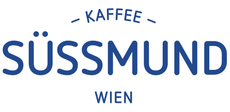Prepare delicious latte at home without an espresso machine

Many people enjoy their coffee with milk or milk alternatives like oat milk, soy milk, etc. Preparing a latte is a very individual matter, as few households own an espresso machine. However, you can make a great latte with some coffee makers without having to invest a lot of money. We'll show you how to easily prepare delicious cappuccino or caffè latte at home.
Differences in the preparation of milk coffee
Depending on the ratio of coffee to milk and the consistency of the milk, different types of milk coffee are distinguished. Accordingly, a cappuccino consists of less milk (approx. 120 ml) compared to a caffè latte (approx. 200 ml). While cappuccino and caffè latte are prepared with warm, frothed milk and espresso, the French café au lait originally consisted only of warm milk without milk foam and filter coffee.
Prepare a cappuccino
A cappuccino consists of espresso, milk, and milk foam. If you have an espresso machine, the best way to froth the milk is with the steam from your coffee machine. But even if you don't have a portafilter machine at home, you can easily make a cappuccino.

A short, strong coffee brewed in a moka pot or Aeropress is ideal as the base for a cappuccino. Your moka will taste best when brewed in the Bialetti Brikka model , as its special valve produces a bit of crema, resulting in a sweeter coffee than other models. Short, intense brews made with the Aeropress are slightly less strong but all the more aromatic . It's worth trying! Here you'll find brewing instructions for both themoka pot and the Aeropress .
For frothy milk, it's best to use an electric milk frother. With it, you can froth cold or hot milk, or simply heat it. Most devices cost between €50 and €100 and effortlessly produce fine-textured milk foam for your latte. Models with dishwasher-safe milk containers are especially convenient.
The right milk for your latte
In principle, you can use any type of milk for your latte. The taste varies depending on how the milk is processed and its protein and fat content. Generally, whole milk with a higher fat content tastes a bit creamier than light milk with a lower fat content. Lactose-free milk, on the other hand, tastes slightly sweeter due to its special processing and froths more than whole milk. You'll notice this when you froth the milk.
Vegan milk alternatives are available in numerous plant-based varieties. The differences lie in the protein and fat content of the products, as well as the inherent flavor of each plant. Often, only the "barista" versions produce enough foam for your latte. These vegan products usually have some added fat to create a creamy, milky consistency. Basically, you can froth milk with these products just as you would with whole milk. In terms of taste, you need to choose a milk alternative that enhances your latte without overpowering it with a strong flavor of its own.

Leave a comment